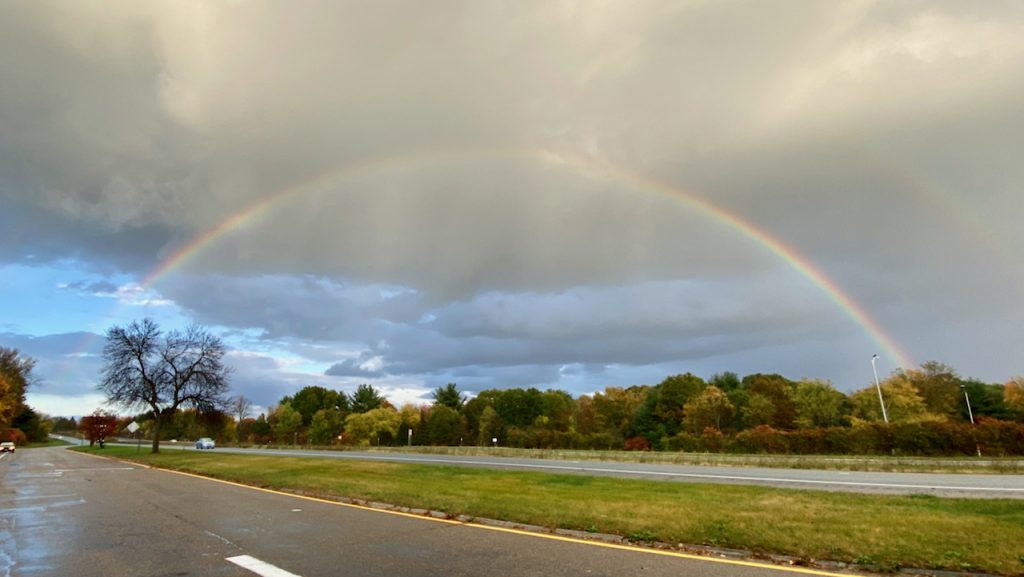October 17, 2021 Kevin Russell
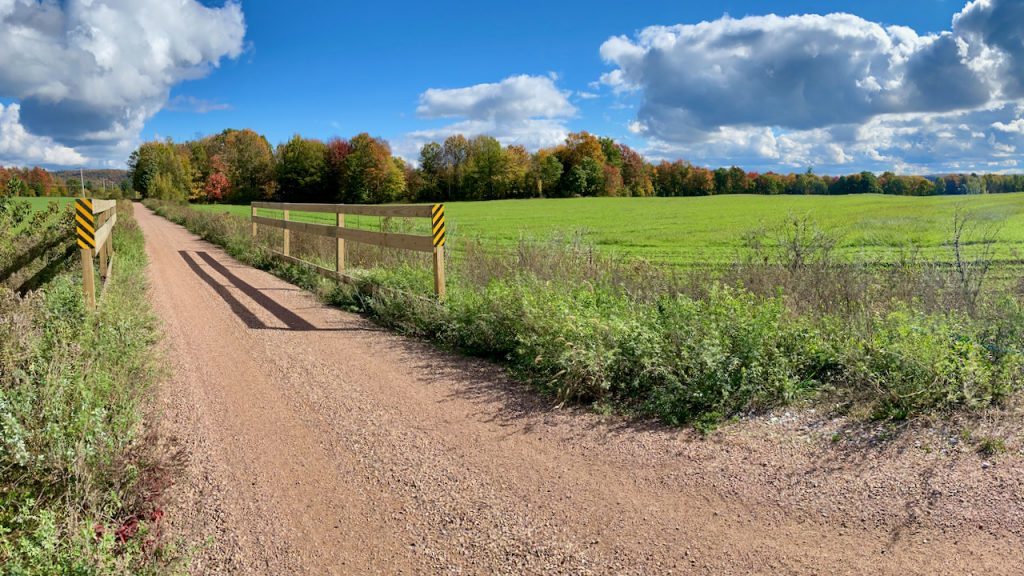
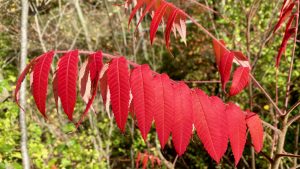
Back in the autumn of 2005, a window of opportunity opened for me to walk across Vermont. At the time, I was serving as the Chairman of the Vermont Trails and Greenways Council (VT&GC) and I had been hearing about the Lamoille Valley Railroad and the plan by the Vermont Association of Snow Travelers (VAST) to convert it into a 4-season recreation trail. Over a period of a few years and several meetings, Sandy Woodbeck would extol the benefits of taking on the daunting task of converting the state-owned railroad into New England’s longest rail trail. At nearly 100 miles in length, the railroad connects 17 towns between St. Johnsbury and Swanton. By 2005 the project became a reality when VAST signed a lease to operate the railroad as a trail and Senator Bernie Sanders was successful in obtaining $5.1 million in federal funding to convert the railroad to trail. To support VAST and the variety of summertime uses, I walked the rail corridor over a six-day period from St. Johnsbury to Swanton in late October and recorded the experience with photographs. Taking my slideshow on the road the following summer to various towns along the trail was instrumental in building public support for the trail and the formation of the Friends of the Lamoille Valley Trail (FLVRT), a non-profit partner that continues to provide maintenance and trailhead facility improvements. In 2006, I returned to walk it again end-to-end (from the opposite direction) and, then again in 2015, a ten-year anniversary and following the opening of two major sections of the trail.
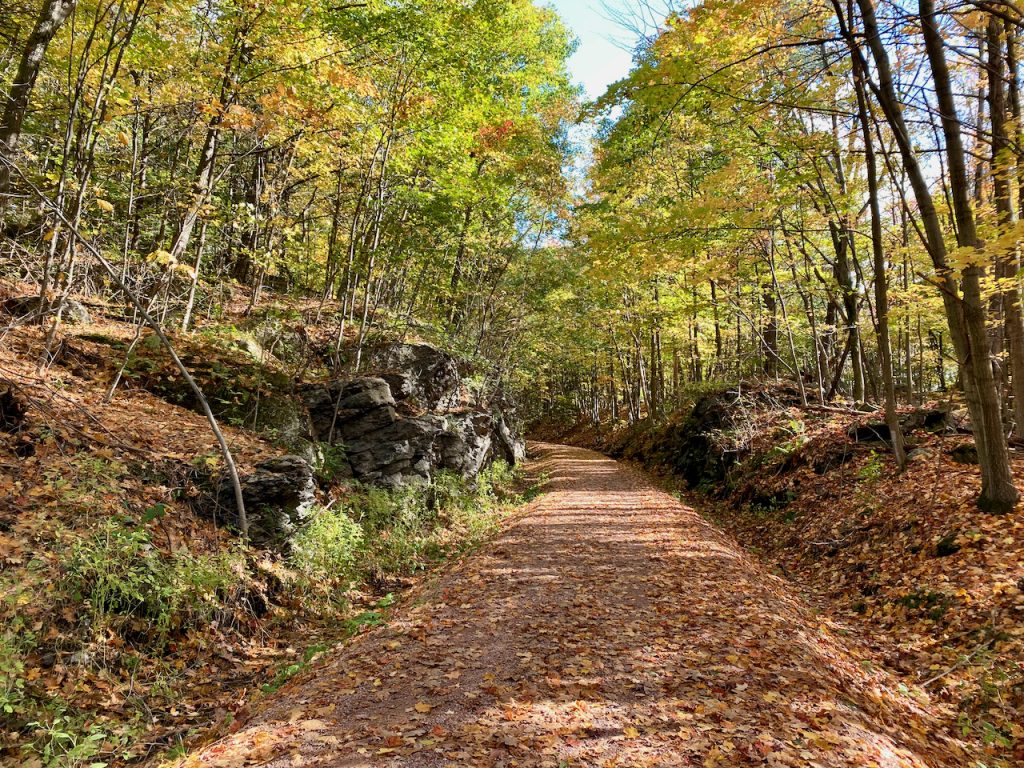
Every year, I make a pilgrimage, returning to bike or walk a section. I have cajoled friends to join me on some fun rides between St. Johnsbury and West Danville in the east, and between Morrisville and Cambridge in the west. These are the first two sections open to 4-season trail use and bike friendly. This day, I have really enjoyed the new section recently completed in the very northwest part of Vermont.
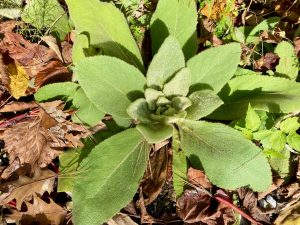
Now, 16 years after my first walk, the trail development has gained much momentum, with the opening of new mileage in the northwest between Swanton, Highgate, and Sheldon. This was my destination for a celebratory ride on another fine autumn day. This day was a solo ride to reconnoiter the route and check out various destinations, viewing points and sites to visit for a much larger group ride next weekend.
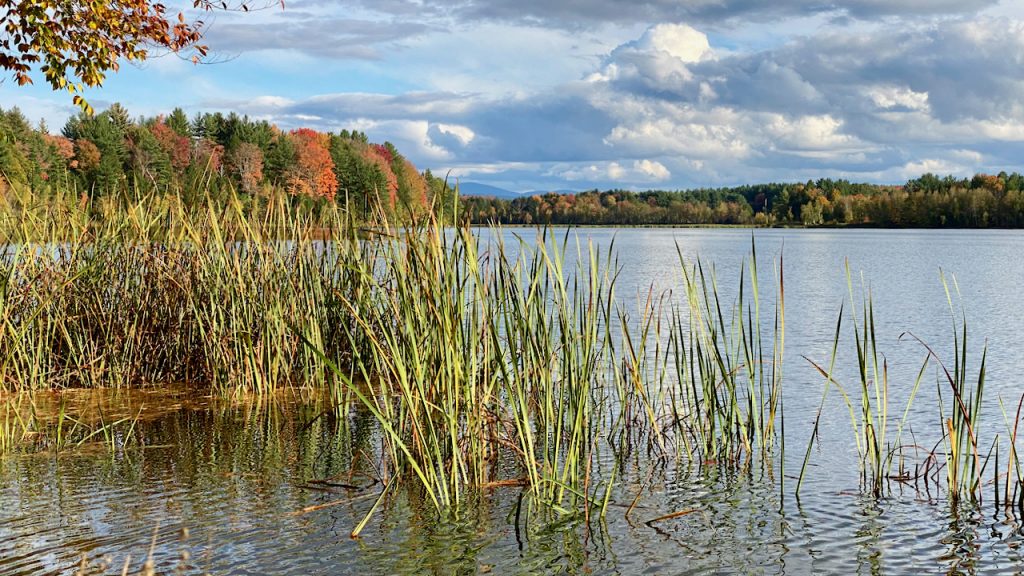
I chose to park near the dam at Highgate Falls and ride an old town road/trail along the Missisquoi River that I walked back in 2005. What was listed on the map as the Missisquoi River Walk turned into the off-road vehicle trail from hell, much to my disappointment. I had hoped to find the former town road in better condition, but it was not. In fact, the network of trails had expanded along the riparian zone creating a maize of confusing trails complete with deep ruts and huge puddles full of water from the previous evening’s rain. I quickly became disoriented and found myself far from my plan to connect to the farm road that would take me up to the LVRT. Thanks to my gps, I was able to find the old road by riding along the edge of a large cornfield. I discovered that the fatbike tires worked great on the soft soils. With wet feet and a muddy bike, I finally hit the flat and dry rail trail and proceed westerly to Swanton. I will not return that way.
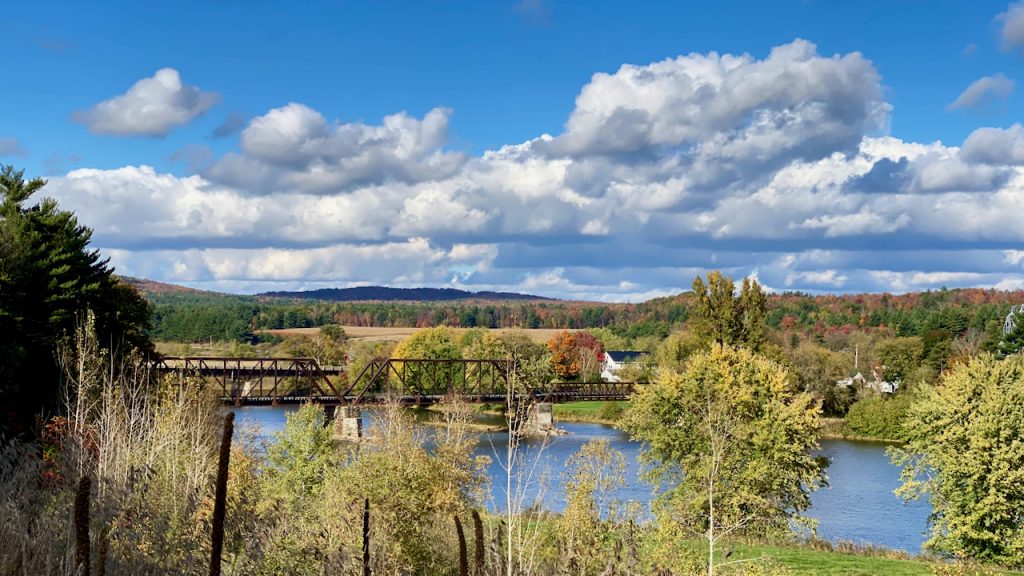
Cruising at a comfortable clip, I observed the recent work that required filling in large washouts and clear the ditches of the legacy silt of the 150-year-old rail corridor. There are several new culverts and bridges that hopefully will keep the trail high and dry for the long term as a trail. The railroad’s history is one of constant repair from floods and washouts.
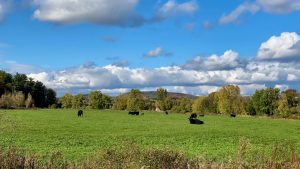
The western terminus of the rail is the one-mile Swanton Bike Path, completed a few years ago. The trail surface transitions from hard-packed, fine limestone aggregate to asphalt concrete through the neighborhood before crossing the Missisquoi River on a restored iron bridge and terminating at a restored train station/museum. Here I took a short break to replenish my energy and fluids before returning to Highgate. I decided to ride into downtown before returning to the trail, taking in the sights of the sleepy village on a Sunday morning. Once again on the trail heading easterly, I put the machine into high gear and pushed hard back to my starting point in Highgate where I took another break at the car. Now fully recharged, I embarked on part two of my planned ride – thirteen miles round trip between Highgate Center to Sheldon Junction. First, I stopped to check out the dam and historic bridge at Highgate Falls. Adjacent to the dam is an 1887 lenticular iron bridge that has been restored and serves as a bike a pedestrian path. The lenticular design is created by the catenary curves of the arch and cable that create the shape of convex lens. From the bridge one can look upstream beyond the dam at the enormous amount of water being restrained and the bucolic landscape along the Missisquoi.

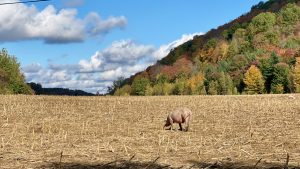
Now it was time to return to the trail. I pushed off with the wind at my back on the newly opened trail to the junction of the Missisquoi Valley Rail Trail. These two railroads (trails) meet at the aptly named Sheldon Junction. Within a short distance, the trail begins to traverse the open farmland. The dairy farms of Franklin County rival the large farms of the Champlain Valley. Open corn and hay fields extend for miles as the thin corridor of the railroad dissects them. This day the sky was a patchwork of puffy clouds and blue that enhanced the picturesque views of the deep green fields surrounded by the autumnal colors of the adjoining forest land. A picture-perfect Vermont landscape was revealed at every turn. After a couple of miles east of Highgate, the Missisquoi River comes into view. The recent rains have given the river a health flow, filling the riverbed from side to side. The rushing water riffles swiftly along, reflecting the blue sky above. I ride on at a steady pace, my peddling in sync with my breathing. Riding a rail trail is not hard as there are no hills to speak of with many long straight-away sections in between the occasional long and graceful curves.
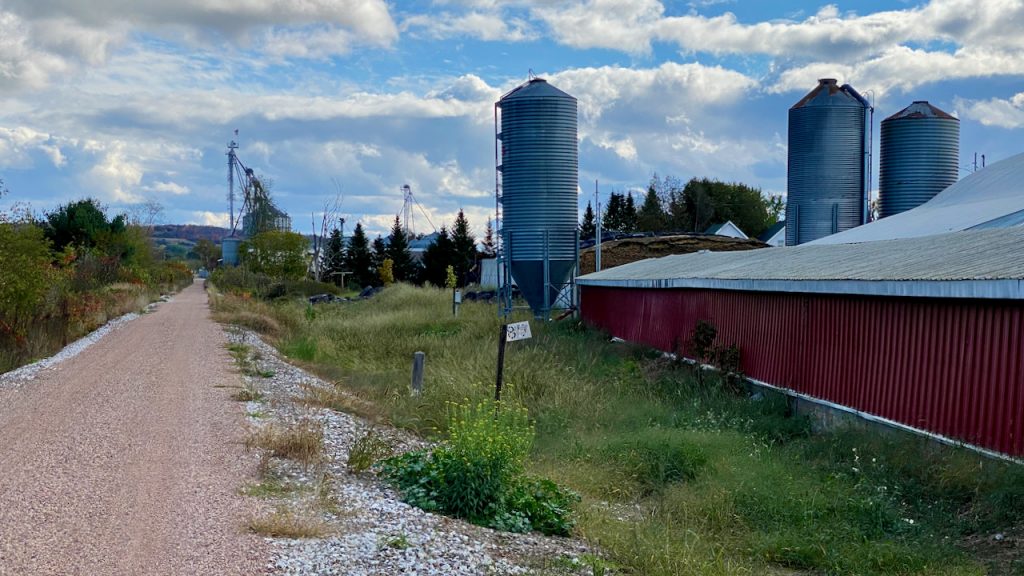
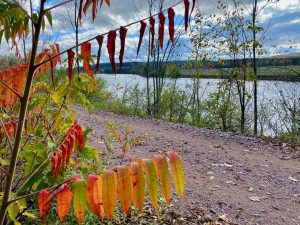
Far ahead one can see the grain silos standing tall above the land at Sheldon Junction. Trucks now haul the harvest to and from, as the trains no long run on the rails that joined here. What does remain are the large iron bridges that span the Missisquoi. One carries the LVRT that runs south toward Fairfield and the other carries the MVRT that runs east toward St. Albans. I recall back in 2005 that walking across the LVR bridge was a very scary experience as the bridge still had the rails and ties with no decking for safely walking. The ties were not regularly spaced with some missing and many rotted, making it necessary that every step counted. On my third end-to-end walk in 2015, I chose to walk around it on the adjoining road. This day was truly a moment of pride as I rode safely across the new decking.
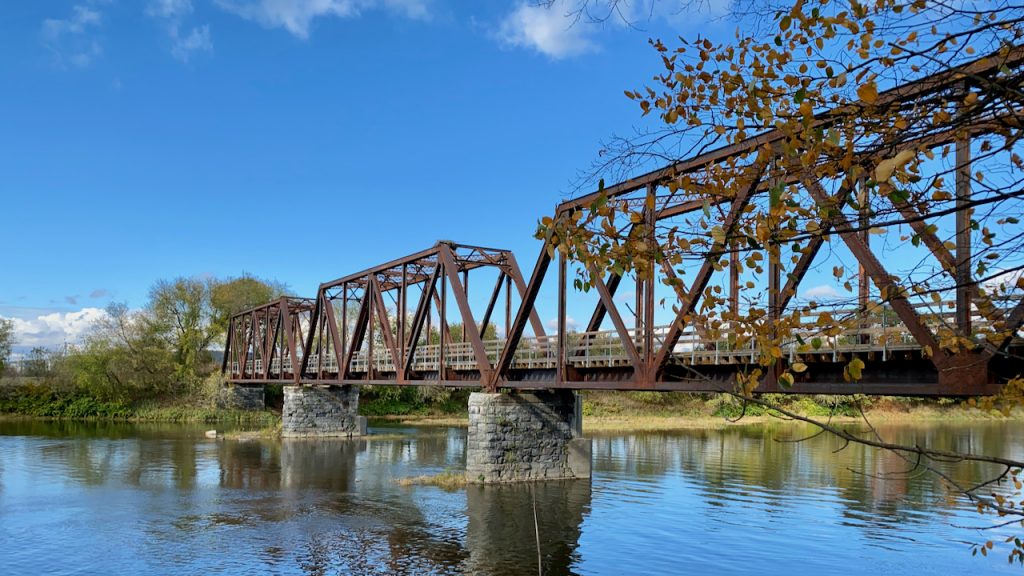
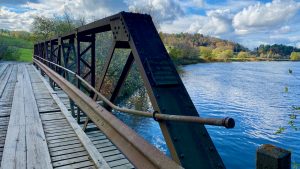
On the far side, I selected a quiet spot on the riverbank for a welcome rest and refreshment. At this spot back in 2005, I slipped and almost slid into the river on the mud of a recent high water event while taking a picture of the bridge. My mantra after that was – “Danger lurks outside the rail trail.” As I sat and watched the water slip past, I contemplated a time, in the near future, when I will walk the route safely from end-to-end on the fully completed trail. Thank you, Governor Scott for fully funding the completion of the final center section of the trail. There are two sections yet to be completed. One from Sheldon to Cambridge Junction, a part of the experience that I call the Magical Kingdom of Vermont. The other longer, center section from Morrisville to West Danville will connect east and west through Hardwick and make the LVRT the longest rail trail in New England, Vermont’s emerald aisle.
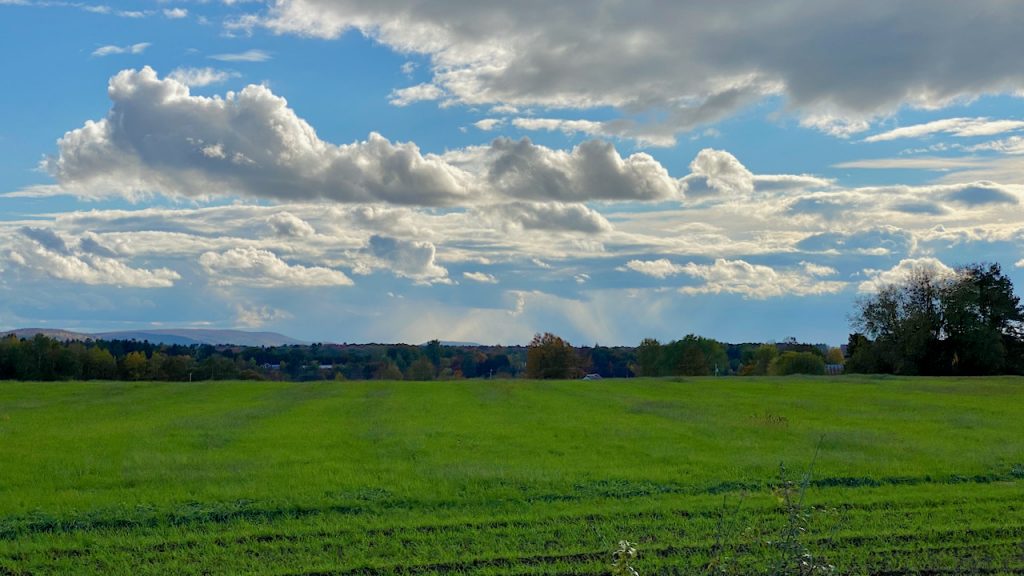
Meanwhile, it was time to get back on the saddle to return to Highgate, my car and the beer waiting for me in my cooler. Spinning and grinning the entire way back, I marveled at the Vermont pastoral splendor basking in the autumnal glow as the late afternoon sun was low casting a warm light on my surroundings. Before I knew it, I was back in Highgate. The recon successfully complete, I packed up the car and headed home. Traversing the Vermont countryside in my car was another joy as intermittent rain showers and sunny skies produced a number of rainbows that added to the splendor. I was in a quiet and reflective mood with a profound feeling of contentment, knowing that my advocacy many years before was helpful in making the LVRT a reality. I look forward to riding it again soon with friends. And, maybe someday in the future, from end-to-end in one day.
